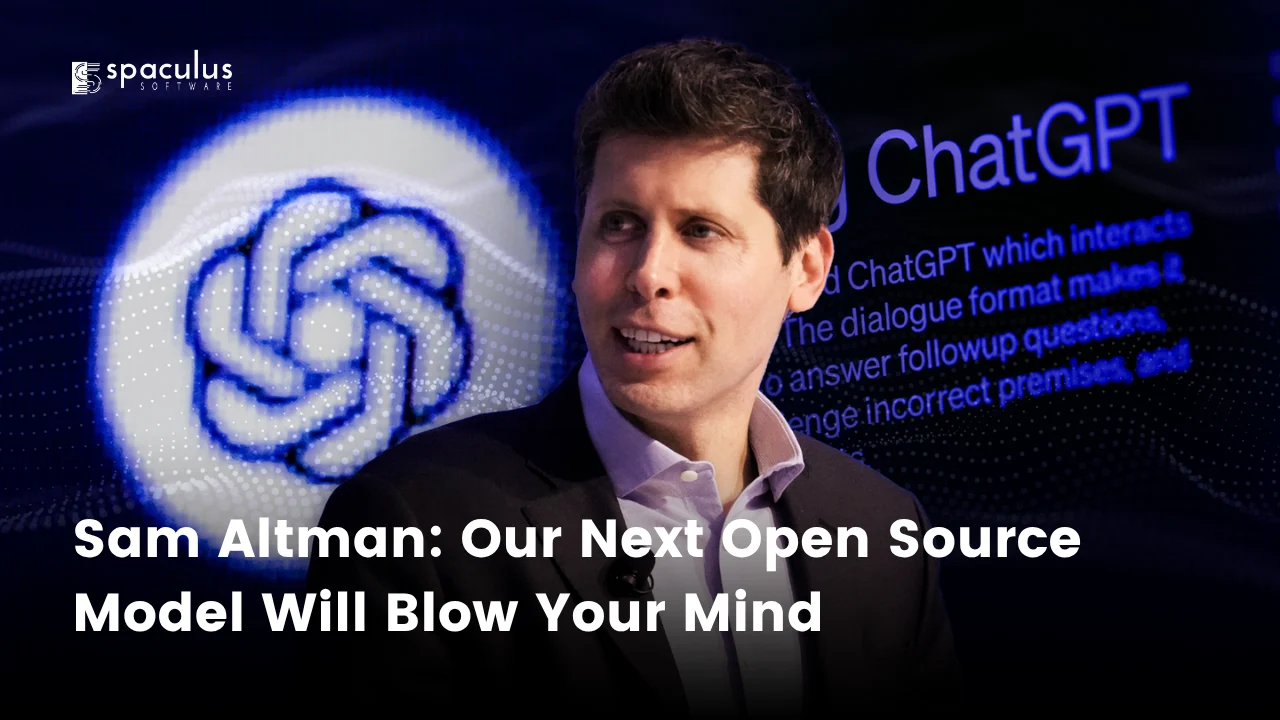
When Sam Altman makes a bold promise, the tech world listens. And his recent comment about OpenAI’s upcoming open-source release wasn’t just bold — it was a warning.
“Our next open source model will blow your mind.”
Not a benchmark.
Not a press release.
A straight-up statement of intent.
This wasn’t marketing noise. It was a directional signal — one that suggests OpenAI is about to shift the balance of power in AI development again.
Let’s break down why this matters.
If you’ve been following the evolution of large language models (LLMs), you know how we got here:
But most of these models, especially from OpenAI, have lived behind walls — gated by APIs, throttled by usage caps, monetized by tokens.
What makes this new open-source release different?
For starters, it won’t live behind a paywall.
It won’t just be a “lite” version for hobbyists.
Altman made it clear: this will be a powerful, fully usable model. The kind that lowers the barrier to entry for serious developers, startups, and researchers — not just AI enthusiasts.
This move may feel surprising, given OpenAI’s recent tilt toward commercial products like ChatGPT Plus and enterprise APIs. But it’s also strategic.
The AI world is fragmenting. Open-source players are getting sharper.
OpenAI knows it can’t win the AI race by staying closed forever.
Instead of watching open-source momentum grow from the sidelines, they’re stepping in — not just to participate, but to set the tone.
| Feature | Closed Models (e.g. GPT-4) | Open Models (Upcoming) |
| Access | API-based, limited control | Downloadable, self-hosted |
| Data Privacy | Server-side data processing | On-device or private cloud |
| Customization | Prompt-based | Full architecture-level tuning |
| Cost | Pay-per-token | Free / hardware-based |
| Speed of Experimentation | Slower, rate-limited | Local, uncapped |
This is the fork in the road.
Use the tools you’re given… or shape them yourself.
Let’s be clear: OpenAI isn’t giving away its crown jewels. GPT-5 will almost certainly remain proprietary, massive, and API-gated — the flagship of its enterprise business.
But the real question isn’t whether the new open model is “better” than GPT-5.
It’s this:
“Is it good enough to build with?”
Altman seems to believe the answer is yes — and that’s what changes everything.
For startups, researchers, and product teams, “good enough” at near-zero cost is better than best-in-class with rate limits.
That means the next generation of:
…might not be powered by GPT-5.
They could be built on this very model.
We’re entering a new era — not of bigger models, but smarter deployment.
Apple’s AI strategy with on-device models is a clue.
So is Google’s push for local Gemini runtimes.
And now OpenAI is playing the same game:
Give people a powerful model they can run where they want, how they want, with no strings attached.
| Before Open Sourcing | After Open Sourcing |
| AI = API integration | AI = Embedded core capability |
| Cloud dependency | Local and hybrid architectures |
| Expensive experimentation | Cheap iteration at scale |
| Vendor lock-in risk | Model portability + full control |
| Generalist tools only | Specialized, domain-tuned models |
If you’ve been relying on cloud APIs, this shift demands a mindset change.
Now, you can deploy locally. Fine-tune privately. Integrate deeper.
You’re no longer just a consumer of someone else’s AI — you can own the stack.
Altman isn’t just teasing performance.
He’s signaling a shift in who gets to build the future.
When the tools of innovation become available to everyone — not just enterprises with giant budgets — the playing field changes.
Now, a single developer with the right dataset and a weekend can build something that challenges legacy platforms.
This is where disruption comes from.
Not from size.
From speed.
From access.
From autonomy.
OpenAI wants to lead the next phase of AI not just through capability, but ecosystem control.
They don’t want Meta’s models to be the foundation of open innovation.
They want it to be theirs.
They know the next wave of influence won’t come from the most powerful model…
It will come from the most adopted one.
And adoption requires freedom.
If you’re building products:
If you’re in strategy:
If you’re a founder:
Sam Altman’s quote sounds like hype.
“Our next open source model will blow your mind.”
But beneath the surface, it’s not just excitement — it’s a shift in how AI will be built, deployed, and owned.
OpenAI is signaling that the next frontier won’t be locked behind APIs.
It’ll be open, local, and far more flexible than most businesses are ready for.
That means teams will need to move faster, design smarter, and rethink where AI lives in their stack — not just as a feature, but as a foundation.
At Spaculus Software, we’re already helping teams navigate this shift — from architecting local inference setups to embedding smaller, task-specific models directly into apps and platforms.
Because this next wave won’t be led by whoever has the biggest model —
It’ll be led by those who adapt to change before they have to.
And that’s the real message behind Sam Altman’s words.